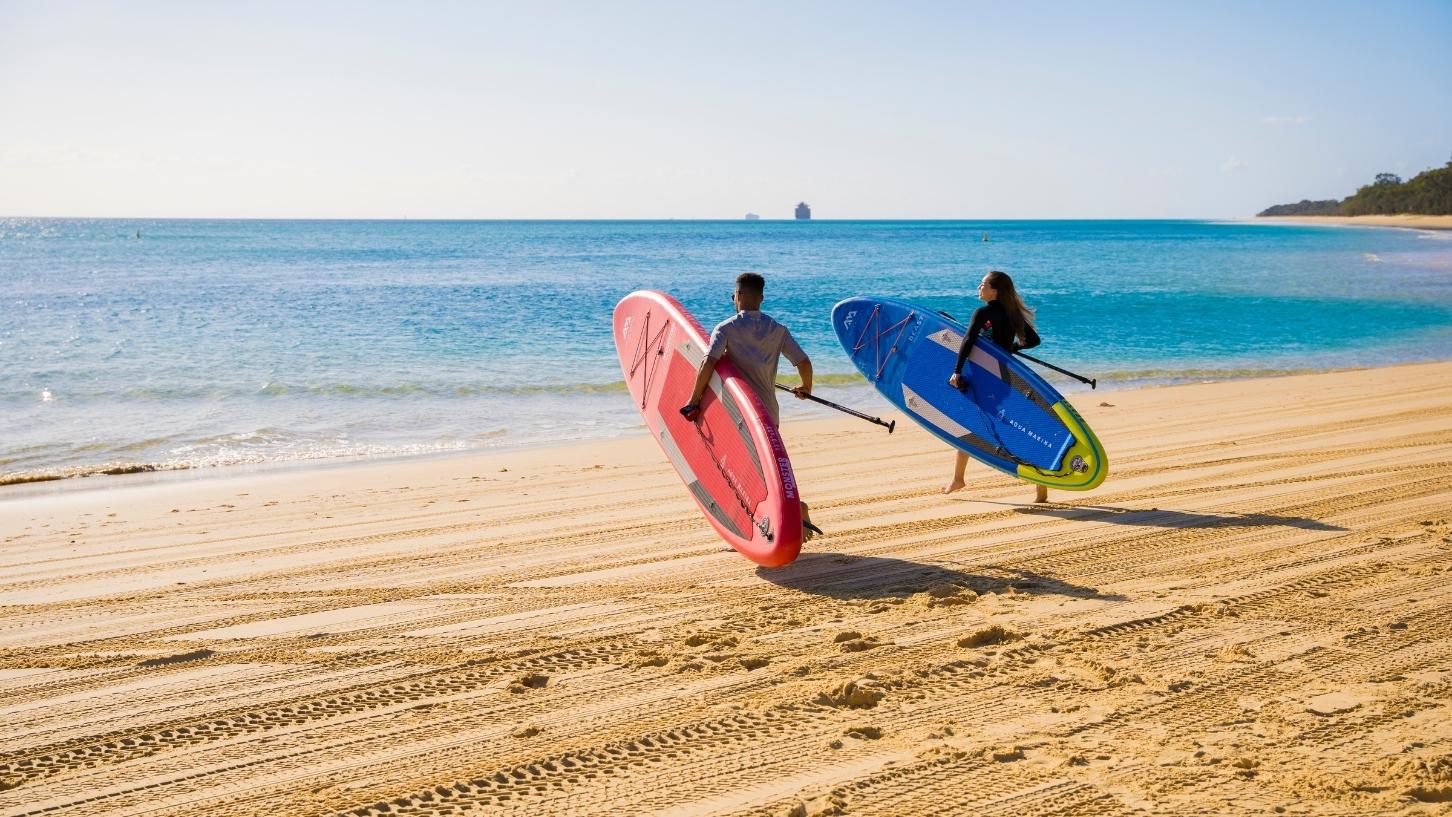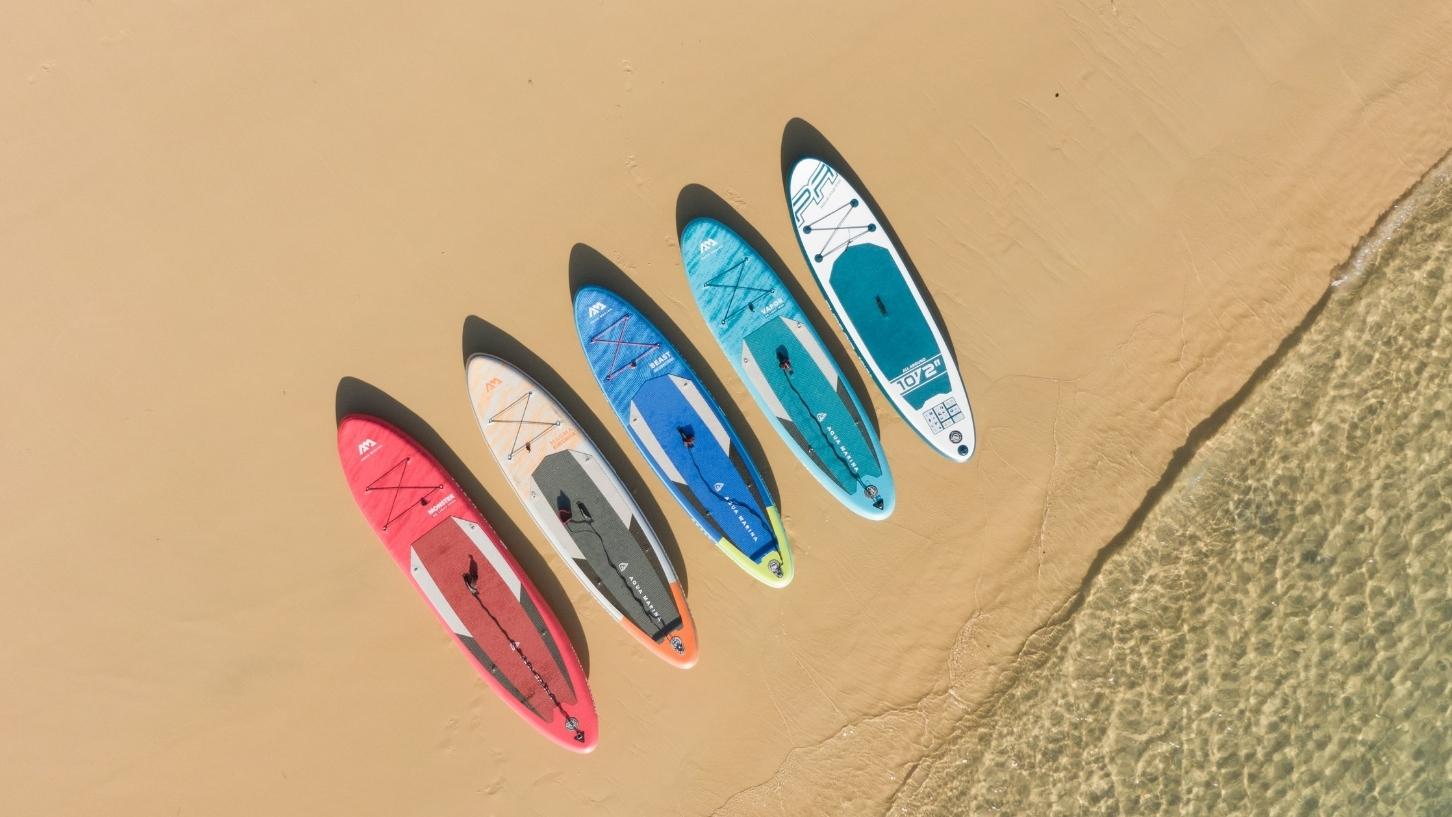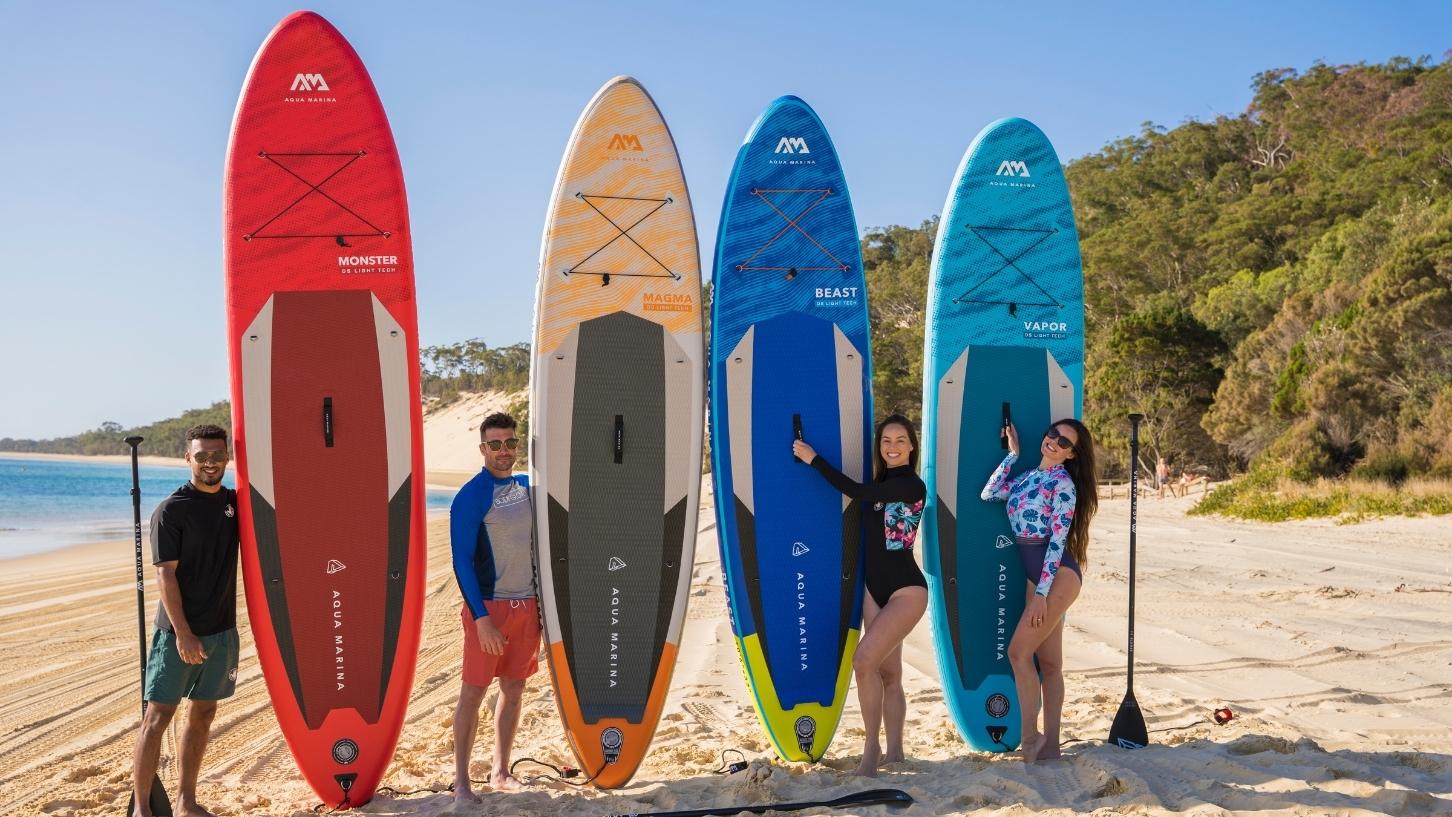| Your browser is not supported. | ||
|
Please browse our site using any of the following options:
| ||
How to choose the best stand up paddle board

If you're keen to give stand up paddle boarding (SUP) a go, choosing your first board is a big decision. You can waste a lot of money thinking that the most expensive SUP is the best one or, at the other extreme, penny-pinching and ending up with a board that takes the fun out of stand up paddle boarding.
So, how do you choose the best stand up paddle board?
By following a few simple guidelines, you can ensure you're buying the best SUP without spending more money than necessary, and making sure you don't miss out on any of the fun.
It all begins with knowing how you want to use the board. Ask yourself:
Are you into SUP for fitness? Do you want to paddle waves? Or would you prefer something more stable for cruising lakes and rivers, with your dog riding comfortably on the bow of your board.
Balance is also a factor. If you're a complete novice, you'll need a board that helps you with buoyancy and wobbles. If, on the other hand, you're an experienced surfer, it's likely you won't need a lot of help staying upright on a SUP. Maybe you're looking to do something like SUP Yoga? If so, balance will also be at the forefront of your mind when choosing a board.
Some SUP enthusiasts want speed and agility, so knowing the kind of design attributes that will get the adrenaline flowing will help you choose the best stand up paddle board for your needs.
No matter what you want to get out of SUP, the main factors that influence a board's performance are:
- Inflatable versus solid boards;
- Board shape (hull type);
- Board volume and capacity; ,
- Board length, width and thickness;
- Board fins.
Solid versus inflatable boards
Solid SUPs
Solid boards come in plastic, fibreglass and carbon fibre construction. Plastic boards are the more price-competitive option but they tend to be heavier and a bit more sluggish than the other two materials. Fibreglass and carbon fibre models are extremely durable and lightweight but carbon fibre SUPs tend to be more expensive than their fibreglass counterparts.
Generally speaking, solid SUPs provide a smoother ride and are faster compared to an inflatable board. There's also a greater variety of sizes to select from, and they're more stable in the water.
Inflatable SUPs
Featuring PVC exteriors with drop-stitch construction that creates an air core, inflatable SUPs come with a pump for inflating the board and a storage bag for when it's not in use. They really can't be beaten for beginners because they're so much more affordable than solid boards. This means, if you decide that paddle boarding isn't for you, you haven't spent a heap of dough in the process.
As well as for newbies, inflatables are ideal for people who are limited for storage space at home, given they can be folded away neatly. This also means they're great for travelling and camping or even to take with you on an interstate holiday. Not to mention, the compact nature of an inflatable SUP will save you having to fit accessories to your car, like roof racks and tie-down straps, if you need to drive to your favourite SUP location.
Board shape (hull type)

There are two main board types for SUP boards: planing hulls and displacement hulls.
A planing hull is flat and wide, like a surfboard, and is designed to sit higher on the water than a displacement hull so to help with your balance. Planing boards are also easy to manoeuvre, making them perfect for beginners or paddle boarders who like leisure paddling, surfing and SUP yoga.
Displacement boards are designed to cut through the water like kayaks and canoes, making them the quicker of the two boards. Not as manoeuvrable as planing SUPs, displacement boards feature less resistance, which creates a smoother ride, making them the best stand up paddle board for fitness paddling or racing, SUP touring and camping.
Board volume and weight capacity
The volume and weight capacity of a SUP plays a huge role when it comes to your balance and how easily your board moves through the water. The length, width and thickness of your SUP determines its volume and weight capacity, and board manufacturers combine these three elements in different ways to manage how a board performs on the water.
Take note: never make a SUP buying decision without first knowing its volume and weight capacity!
In terms of volume, a paddle board's volume tells you how well the SUP will float with weight on it, also known as displacement. The higher the volume, the more weight the board can support.
Weight capacity might seem self explanatory but there are a few good reasons to pay attention to your SUP's limit. Loading a board beyond its weight capacity makes it ride lower in the water, and makes paddling a real grind. When thinking about weight capacity, it's a good idea to not just think of your own body weight but also the weight of any gear - such as food and drink - you might want to take with you.
Planing hull boards have a bit of tolerance when it comes to weight capacity and performance but displacement SUPs can be monsters if they're either over or under-loaded. SUP makers spend a lot of time determining the most efficient position for displacement boards to be in the water. Too heavy and a displacement board sits lower in the water making it slow and harder to paddle. Too light and you'll sit too high on the water surface, which means your SUP will be harder to control.
Board length, width and thickness

What size stand up paddle board is the best one for you? When we talk about board size, you'll need to consider three factors: length, width and thickness.
Lengths
Just like surfboards, the length of a SUP influences how it handles. As a general rule, longer boards are faster than shorter ones but shorter boards are easier to steer.
Boards less than 3 metres in length are classed as short boards. The vast majority come in a planing shape and are fantastic for younger paddle boarders. They're more manoeuvrable than long boards, which also makes them great for surfing waves.
Medium boards (3 to 3.5 metres) are versatile enough to suit a wide range of uses for beginners through to intermediate riders. Medium SUPs come in both planing and displacement hull shapes.
Long boards (4 metres and over) feature displacement hulls, and they're the go-to choice for SUP for riders who want speed and plan on travelling longer distances.
Width
SUPs are usually between 63 and 91 centimetres wide. The wider your SUP, the more stability you'll have. However, wider boards are generally slower and make paddling difficult if they're too wide compared to thinner ones.
Wider boards are ideal for rookie paddle boarders trying to find their feet (pardon the pun) or taller and heavier riders. They're also a good choice for people who want to try SUP yoga, or for riders who'd like to do some touring/exploring, and want to make sure they have storage space for a small tent or daypack and chiller bag.
Narrow boards offer better buoyancy and balance if you're smaller in height, and better stroke power. They're also the popular choice for boardriders who have a bit more experience and want a faster SUP.
Thickness
Thickness affects the overall volume and weight capacity of a SUP so, if you're looking at two boards of the same length and width but different thicknesses, the thicker board will have more volume than the thinner one, and it can support more weight.
Board fins
Fins improve the stability of a paddle board. Wider bases and longer front edges on fins will track straighter and be more stable than smaller fins. On the other hand, smaller fins offer better manoeuvrability.
Most fins are removable, so you can swap out fins and remove them from the board for storage. Inflatable SUPs have either flexible rubber fins attached to the board or detachable semi-rigid fins.
In conclusion

Your SUP board is an extension of you, so you want to make sure it's the perfect fit. Arming yourself with these tips before you decide on a board will ensure you buy smart and walk away with the SUP that's best for you.